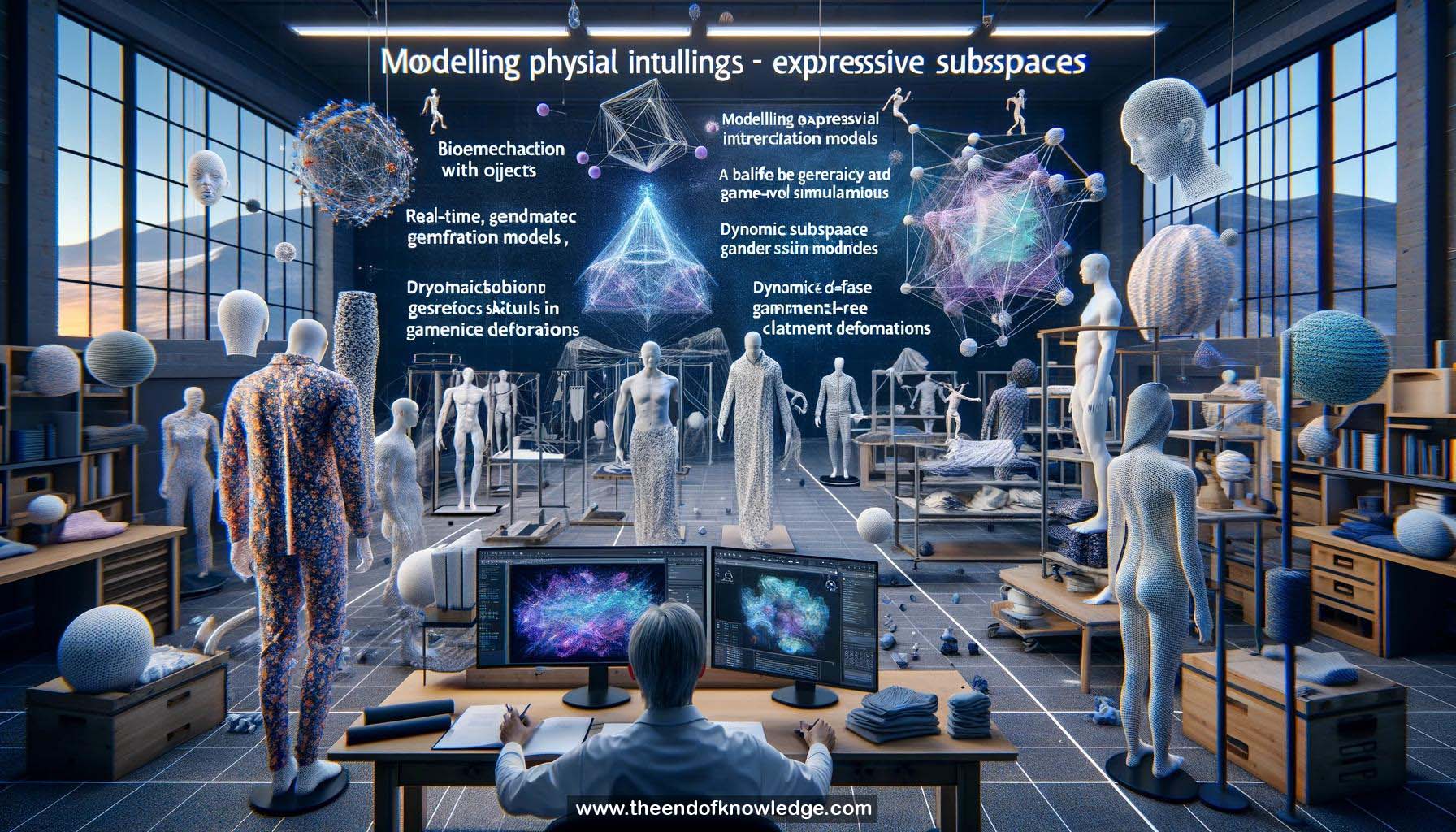 >
>
Concept Graph & Resume using Claude 3 Opus | Chat GPT4o | Llama 3:
Resume:
1.- Simulating biomechanics and interactions with objects, balancing accuracy, generality, and efficiency.
2.- Exploring if machine learning can improve expressive subspace representations without performance penalty.
3.- Connecting machine learning methods with physics-based simulation subspaces.
4.- Finding compact non-linear subspaces (Fulton) and evolving linear subspaces due to contact and dynamics (Holden).
5.- Designing expressive deformation subspaces - geometric (fast) and physics-based (general).
6.- Including contact interactions in subspace formulation.
7.- Deriving skin deformation model accounting for body pose, shape, and dynamics.
8.- Challenges in learning from limited shape samples due to inter-subject pose variability.
9.- Separating global and local pose and shape deformations in a network architecture.
10.- Achieving plausible dynamics for arbitrary body shapes, demonstrating subspace generalization.
11.- Learning geometric deformations leveraging subspace representation.
12.- Accounting for contact when learning deformations.
13.- Machine learning for efficient virtual try-on of tight clothing.
14.- Challenges in loose garments - collisions and post-processing.
15.- Canonical space of garment to work with constant body.
16.- Un-posing and de-shaping garment deformations using diffused human model.
17.- Variable skinning weights from diffuse model to avoid cloth-body collisions.
18.- Optimizing variational autoencoder for collision-free generative subspace of garments.
19.- Runtime pipeline: canonical subspace regressor, full-space lift, pose/shape blendshapes, skinning.
20.- Revisiting skin simulation with physics to handle external interactions.
21.- Retaining pose accuracy and dynamic deformation by extending data-driven model.
22.- Components: parameterized skeleton, physics-based skin, subspace handles.
23.- Creating internal skeleton and variable-thickness skin layer from body surface.
24.- Modifying deformation gradient to make physics model insensitive to pose model.
25.- Handle-based subspace respecting skeletal structure and skin surface accuracy.
26.- Comparing handle-based to PCA subspace - local support, better contact generalization.
27.- Applications in hand simulation and tracking.
28.- Embedding contact information in physics-based simulation subspace.
29.- Aggregate non-linear model: linear handle subspace plus learned non-linear correction.
30.- Separate learning of internal and external corrections to simplify and improve accuracy.
Knowledge Vault built byDavid Vivancos 2024